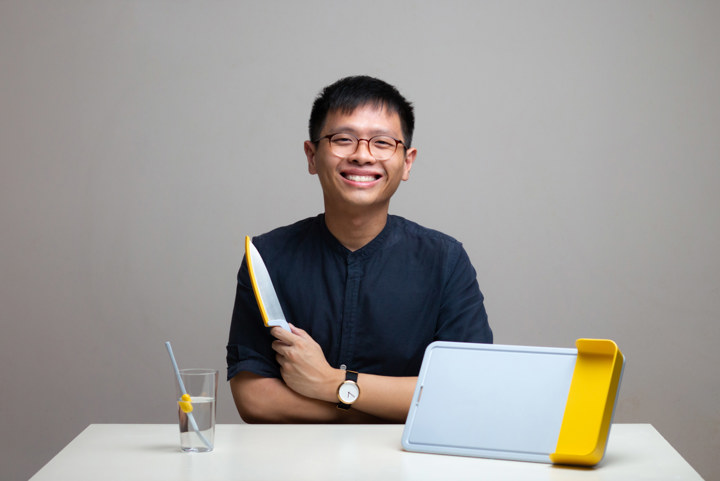Researchers reveal that the world's blind will increase by three times, from about 36 million to 115 million in 2050[1]. Closer to home, Singapore faces the challenge of an aging population. By 2050, 3.08m[2] people in Singapore will be aged 65 years or older, putting them at risk of developing moderate to severe vision impairment[3]. Every day, the blind and partial sighted face difficulties, including cleaning and maintaining a safe home environment, maintaining personal care, and preparing and cooking meals[4].
The Solution:
Kevin Chiam, an industrial design graduate from the National University of Singapore, was inspired by his time as a volunteer for Touch Homecare Community Services. While delivering meals to less-privileged seniors, he learnt of the difficulties they faced with the task of meal preparation. It was then when he decided to apply his passion for industrial design to solve the problem.
‘Folks’ Kitchenware leverages on natural, sensory feedback and tactile cues to pre-empt and inform the blind - such that they can prepare food safely with convenience, confidence and dignity.
Knife: Poor hand posture and irregularly-shaped ingredients make cutting with a conventional knife for the visually impaired perilous. To address this problem, the knife features a retractable guard that serves as a physical anchor. This guides the user’s fingers during the cutting process.
Chopping board: A modified chopping board featuring a side tray that pegs freely to its sides. The tray acts as an extension of the hand to gather ingredients, and helps the user transfer contents efficiently while minimising spillage.
Teaspoon: An integrated float rises as liquids are added into the vessel. Tactile feedback of the float coming into contact with the user’s fingers lets them know when the glass is near-full.
[1]https://www.thelancet.com/journals/langlo/article/PIIS2214-109X(17)30293-0/fulltext#
[2]https://esa.un.org/unpd/wpp/
[3]http://www.who.int/news-room/fact-sheets/detail/blindness-and-visual-impairment
[4]https://www.rnib.org.uk/sites/default/files/Facing%20blindness%20alone%20Campaign%20report.pdf



Share this page on